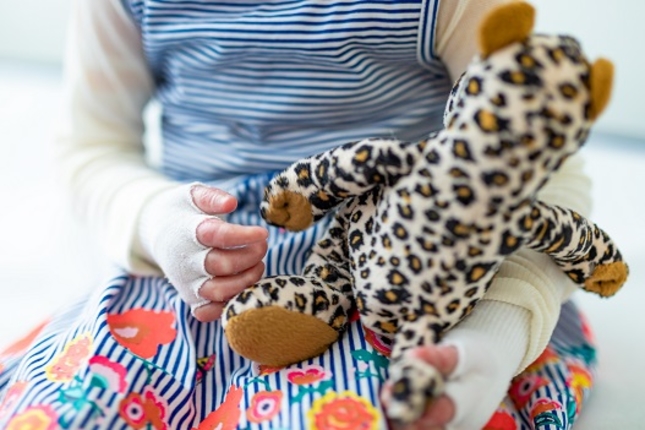The patient organization
DEBRA Austria
As a national patient support organization DEBRA Austria provides competent medical care for patients living with Epidermolysis Bullosa (EB) and funds first-class research targeted at finding therapies and cures for EB. In addition DEBRA Austria provides social, psychological and financial support for patients and their families.
The Austrian patient organization, was founded in 1995 and helps people living with Epidermolysis Bullosa (EB). DEBRA Austria has set itself the goal of providing competent medical care for the "butterfly children" and to increase the chance of healing via treatments developed through targeted, excellent research. DEBRA Austria has been funding international peer-reviewed research for many years. These international funding rounds are orgainzed via the EB Research Network. In addition to its own direct research funding DEBRA Austria has founded a new entity called DEBRA Research, a company focussing on translational research and the development of therapies for EB.
Butterfly children
We call those affected by EB "butterfly children" because their skin is as vulnerable as a butterfly's wings. EB is a group of rare diseases, with some subtypes extremely rare. About 500 people are affected in Austria, about 30,000 in Europe, and approximately 500,000 worlwide, although this may be an underestimate. The public health system is not prepared for the special challenges posed by such a disease. Thus,medical care, research and individual support for the "butterfly children" are currently only possible through public donations.
EB House Austria
On the initiative of DEBRA Austria, the world's first special clinic for "butterfly children" was opened at Salzburg University Hospital in 2005. Here, competent medical care, successful research, clinical studies as well as education and training are possible under one roof.
Link to EB House Austria website
EB Clinet
EB Clinet is an international platform that ensures access to information on the best possible patient care and enables innovation by connecting health care professionals who work with EB, sharing and retaining EB expertise, and promoting collaboration and development. EB Clinet is managed via the EB Acadamey - one pillar of the EB House Austria and is funded by DEBRA Austria.
EB Resnet
Another project launched and managed by DEBRA Austria is the EB Research Network (EB-Resnet). EB Resnet is a network of patient organisations working together and in cooperation with partners to develop and deliver effective therapies for all people living with Epidermolysis Bullosa (EB).
DEBRA Austria does not receive any grants or subsidies from the public sector - even the operation of the EB House Austria is possible only through donations.
What is EB?
Epidermolysis Bullosa (EB) is the name for a group of painful genetic skin conditions that cause the skin to become very fragile and tear or blister at the slightest touch. Sores also occur on mucous membranes, in the mouth, eyes, esophagus and gastrointestinal tract, and the function of internal organs may be affected (e.g. heart, kidneys). There are many different subtypes of EB, all classified under four main types according to the depth within the skin at which blistering occurs. Some subtypes are relatively mild but nevertheless cause pain and limit activity, and may be limited to just part of the body, e.g. the hands and feet are affected,, to the most severe, which can have a devastating effect on any part of the body causing lifelong disability and pain. In severe forms of EB, life expectancy is shortened, and in some cases, fatal in infancy. Living with EB is a great challenge for those affected and their relatives.
Recommended links for more details on the different EB subtypes:


